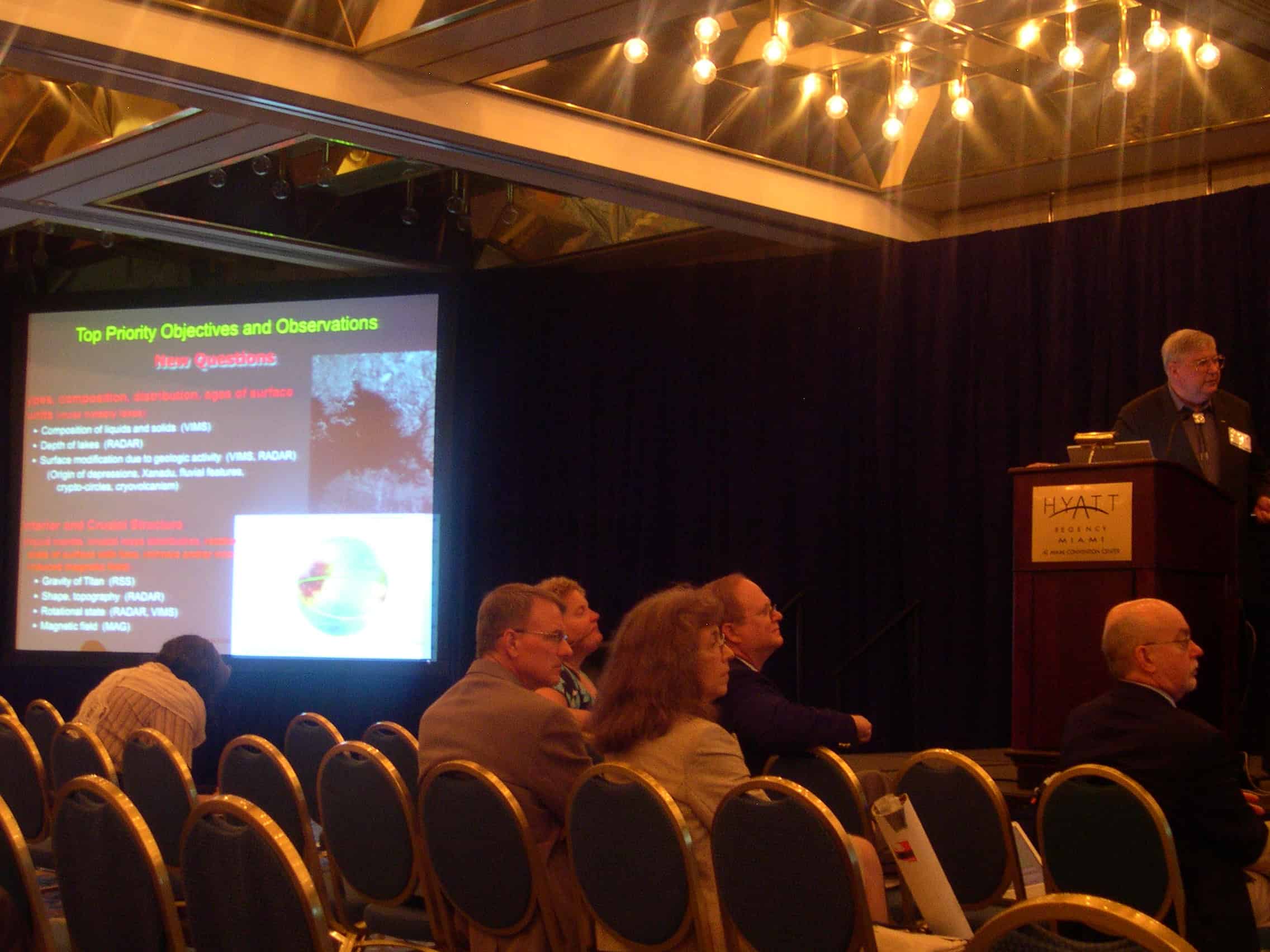
Look this way: Dennis Matson telling us all about Titan
By Michael Banks in Miami, Florida
I was up bright and early this morning to attend the opening symposium at the 216th American Astronomical Meeting in Miami, Florida.
The talk was about Titan, the largest moon of Saturn, and was given by Dennis Matson from NASA’s Jet Propulsion Laboratory, a project scientist for the Cassini-Huygens mission that launched in 1997.
Huygens, a European Space Agency mission, was launched together with NASA’s Cassini satellite for a seven-year trip to Saturn. While Cassini travelled off to orbit Saturn, Huygens separated to head to Titan where it landed in 2004.
You might think Titan is a lifeless body orbiting Saturn, but Matson showed it to be anything but. With lakes of Methane on the north pole of the moon – some as large as Lake Superior – as well as evidence for plate tectonics, volcanoes and sand dunes forming on the surface, the moon is very much alive.
That is not all, as Matson flashed images of methane clouds and possible deposits of lava. There is even a claim that an ocean of liquid water exists underneath the rocky surface.
Even with our knowledge of Titan, there is still a lot to find out, including whether the moon has a magnetic field.
After five years on Titan, Huygens has now delivered most of its objectives so astronomers are planning what the next mission could be to Saturn’s sixth moon.
Matson outlined two possible missions astronomers are looking into. One is using a probe attached to a balloon that would circumnavigate the moon at an altitude of 10 km. This would allow scientists to get a global picture of the moon closer to its surface.
The other possible mission is an 85 kg probe that would float on one of Titan’s lakes, which could, for example, probe its depth.
Astronomers probably have other ideas up their sleeves, but in the end they may be constrained by technology. “We even had some people who thought about sending some sort of submarine to Titan to explore the lake,” says Matson.



